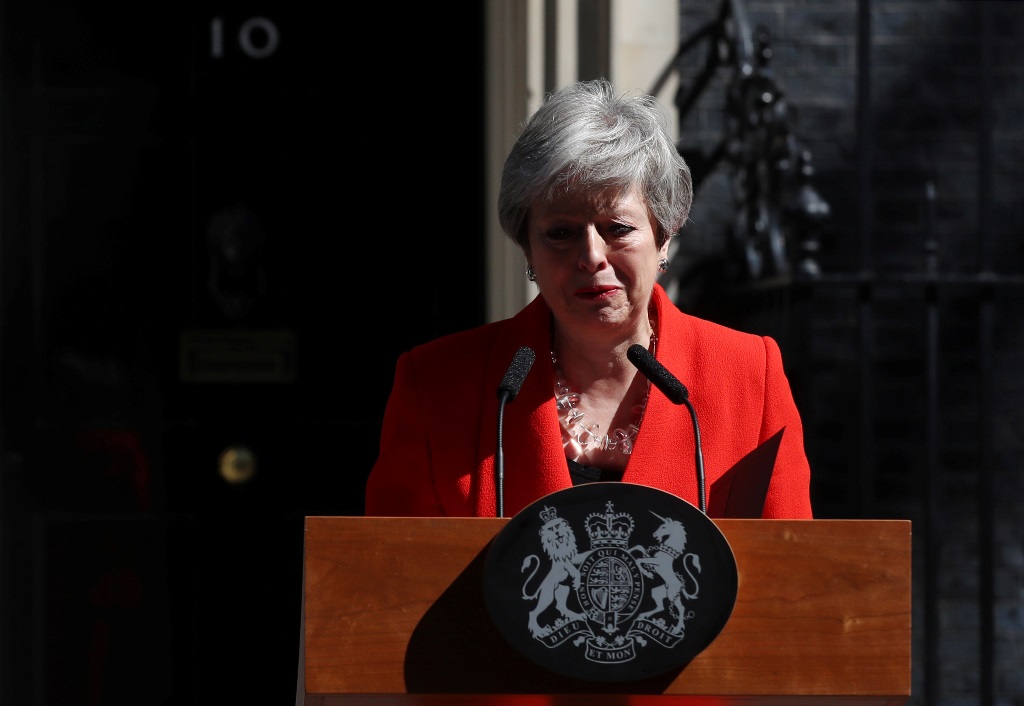Consequences of the Resignation of Prime Minister May and the UK Elections to the European Parliament

What were the main reasons for May’s resignation?
The pressure on the prime minister to resign has been rapidly increasing in the Tory party since March when the UK government first requested postponement of the exit date. In April, support for the Tories collapsed in the campaigns preceding local elections in England and Wales (on 2 May) and the European Elections (23 May). May lost the support of the last Brexiters in her cabinet when she proposed on 21 May to amend the Withdrawal Agreement Bill with provisions regarding a second referendum and a customs union with the EU. Moreover, the Tory-disheartening forecast for the European elections turned to be accurate. The overall contest was won by the newcomer Brexit Party, gaining 32% of votes and 29 seats. Other parties gained as well, including the Liberal Democrats, 20% and 16 seats, Labour, with 14% and 10, and the Greens, at 12% and 7, followed by the Tories, at 9% and 4.
What is the near-term political timetable?
In the next few weeks, the new UK and EU governance will emerge. May’s resignation from party leadership will be official on 7 June, although she will remain a caretaker prime minister until a new one is selected. At the parliamentary stage of the procedure, which will last about two weeks, only Tory MPs will vote, narrowing the list to two candidates. Then, 150,000 party members will elect a new leader. By September, the new PM will need to renew the “confidence-and-supply” agreement with the DUP and receive a vote of confidence from the House of Commons. Meanwhile, the new European Parliament will assemble for the first time on 2 July. Then, the selection procedures for executive positions will begin, including a new European Commission and presidency of the European Council. Due to the convergence of deadlines for the UK’s exit and the Commission’s appointment (31 October), UK MEPs and the government will participate in their selection. Should there be a willingness for new UK-EU talks on Brexit, there will only be a few weeks available in the autumn—under the new European Parliament but still under the Juncker Commission.
Who will become the next UK prime minister?
There are already nine entrants in the Tory leadership contest. The group has been dominated by politicians who have declared their readiness to conduct a “no-deal” exit, with this outcome so far excluded by only three candidates. The favourites are Boris Johnson and Michael Gove, who were both leading figures in the Brexit campaign in 2016. The ministers of foreign affairs, Jeremy Hunt, and home affairs, Sajid Javid, also stand a high chance. Johnson has been presenting himself as the “One-Nation Tory” able to attract Labour voters and compete effectively with the Brexit Party. He left the May government in July 2018 to protest against the Chequers Plan. He has pledged to leave the EU with no deal by 31 October unless the Withdrawal Agreement was renegotiated. Gove remained in the May government and has been careful about his rhetoric towards the EU. He has also been supporting May’s agreement as a basis for “managed divergence” from the EU. However, he is a true Brexiter with the reputation of ruthlessness in action.
What are the structural challenges that May’s successor will inherit?
The rejection of the Withdrawal Agreement on three occasions by the House of Commons and the Tory and Labour failure in the election campaigns have demonstrated the depth of the political crisis in the UK. Both the Tories and Labour are deeply divided on Brexit, with both parties’ voting discipline, member confidence in leadership, and voter support breaking down. Hence, they seem unable to reach a compromise on Brexit. Despite the Tories suffering in the European elections the worst electoral defeat in their history, Labour also failed to gain votes and seats. The fact that only the parties that have clear positions on leaving the EU gained will strengthen the Tories’ drift towards “no-deal” and Labour’s towards revoking Brexit. May’s successor will have to choose between embracing a hard Brexit (no deal) to maintain the hardcore electorate or building a Brexit compromise at the risk of the party breaking up.
What are the key conclusions for the EU and Poland?
There is polarisation in attitudes in the UK. Parties promoting a “no-deal” Brexit (Brexit Party, UKIP) obtained a total of 35% of the votes while the parties advocating revoking Brexit (Liberal Democrats, Greens, SNP) won a total of 40%. Meanwhile, support for the Tories and for Labour has shrunk to a total of 25%. In case of a snap general election, the electoral geography will play into the hands of the Brexit Party at the expense of the pro-European parties. The election results demonstrate the increased risk of a “no-deal” Brexit, especially if the statements from EU leaders of refusal to renegotiate the Withdrawal Agreement materialise. Hence, continuing preparations for this scenario remains necessary; however, the changes in both the EU and UK leadership create a window of opportunity for new talks. Most probably, it will be necessary to further delay the exit date.




